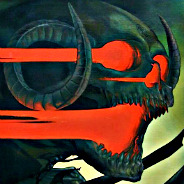Перевести текст на русский язык TEXT 2. ELECTRIC CURRENTS AND THEIR PROPERTIES
Пояснения к тексту:
electromotive force – электродвижущая сила
wire – труба
direct current (d. c) – постоянный ток
alternating current (a. c.) – переменный ток
pulsating current – пульсирующий ток.
Conduction is the name normally given to a movement or flow of charges. The charges are usually electrons, but may also be ions when the conduction
takes place in gaseous or liquid conductors, in which the ions are mobile.
How does the current flow through a wire? A metal is made up of tiny
crystals which are visible under a microscope. A crystal is a regular and orderly arrangement of atoms. As it was explained, an atom is a complex particle in which tiny electrons move around nucleus. When the atoms are tightly
packed as they are in a metallic solid, some of the electrons move freely between the atoms. These are called free electrons. Ordinarily, the free electrons
move at random through the metal. There must be some driving force to
cause the electrons to move through the metal conductor. This driving force
tending to produce the motion of electrons through a circuit is called an electromotive force or e.m.f. that moves electric charges from one point in the
circuit to another.
When an electromotive force is applied to the ends of a wire the free electrons move in one direction. It is the movement of the free electrons in a conductor that induces an electric current. The greater the number of participating
electrons, the greater is the flow of current.
No one has ever seen analectic current. We only know of the existence of
a current by its effects. A current can heat a conductor, it can have a chemical
action when passing through a solution, or it can produce a magnetic effect. We
can measure currents by observing their heating, their chemical, or their magnetic effects.
There are some kinds of current, namely: a direct current (d. c, for short),
an alternating current (a. c.) a pulsating current.
Ответы на вопрос:
ТЕКСТ 2. ЭЛЕКТРИЧЕСКИЕ ТОКИ И ИХ СВОЙСТВА
Пояснения к тексту:
электродвижущая сила – электродвижущая сила
проволока – труба
постоянный ток (постоянный ток) – постоянный ток
переменный ток (переменный ток) - переменный ток
пульсирующий ток – пульсирующий ток.
Проводимость - это название, обычно данное движению или потоку зарядов. Заряды обычно представляют собой электроны, но также могут быть ионами, когда проводимость
происходит в газообразных или жидких проводниках, в которых ионы подвижны.
Как протекает ток по проводу? Металл состоит из крошечных
кристаллов, которые видны под микроскопом. Кристалл - это регулярное и упорядоченное расположение атомов. Как было объяснено, атом - это сложная частица, в которой крошечные электроны движутся вокруг ядра. Когда атомы плотно
упакованы, как в металлическом твердом теле, некоторые электроны свободно перемещаются между атомами. Они называются свободными электронами. Обычно свободные электроны
беспорядочно движутся по металлу.
1)i am sure that you are old enough to understand the seriousness of the problem
2)if there is nothing interesting on tv ,why not watch a video-film (насчет этого я неуверен )
3)at last i managed to find out what really had happened to her
Популярно: Английский язык
-
Перечислите достопремичательности лондона на с переводом...
 nastya0110201606.04.2022 07:33
nastya0110201606.04.2022 07:33 -
Придумать 5 предложений с past simple...
 saidrasulov1506.02.2022 06:24
saidrasulov1506.02.2022 06:24 -
Составить текст на 7 50 ! новых книг вы прочитали? новых фильмов вы...
 vityastah04.04.2021 03:23
vityastah04.04.2021 03:23 -
Перевести сочинение на язык. надо! : на мой взгляд, лето – прекрасное...
 Shkolnik98rus03.09.2021 02:28
Shkolnik98rus03.09.2021 02:28 -
Кто умеет читать по проста напишите что вы прочитали по -hi,steve! -hi,paul?...
 asiadancer31.01.2020 14:58
asiadancer31.01.2020 14:58 -
С этих во составить краткий и полный ответ(Текст и во во вставке)....
 smesh3322110.12.2021 18:11
smesh3322110.12.2021 18:11 -
Умоляю баллов даю ответьте на во полными предл. Culture spot Were the...
 nikipana28.03.2020 14:23
nikipana28.03.2020 14:23 -
Test( the 4th form) 27/04/20 1.Вставь в предложения необходимые по смыслу...
 mikalis06.08.2022 04:52
mikalis06.08.2022 04:52 -
описать картинку по английскому...
 DimaVlasov106.01.2020 22:31
DimaVlasov106.01.2020 22:31 -
Write a salutation to your friend...
 султа6528.06.2020 09:44
султа6528.06.2020 09:44
